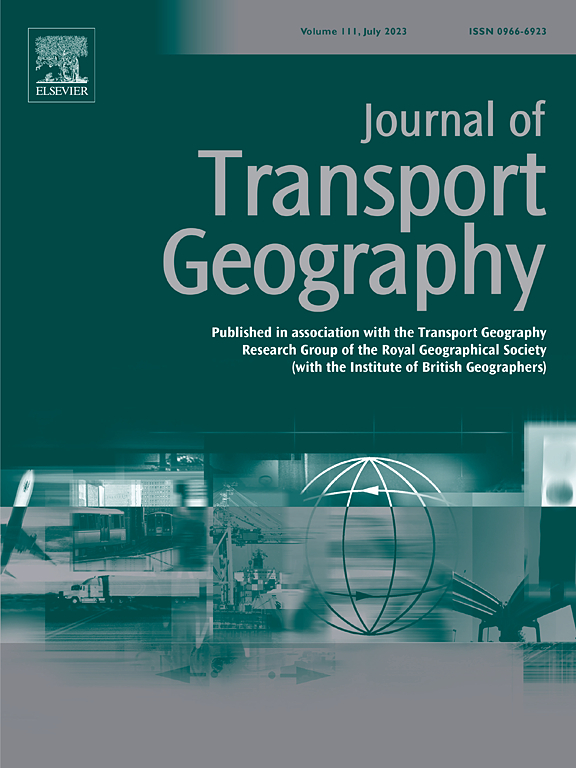城市货运的空间格局和社区结构:柴油车和电动卡车移动的网络洞察
IF 6.3
2区 工程技术
Q1 ECONOMICS
引用次数: 0
摘要
了解城市货运卡车的移动模式对于优化货运系统和城市规划至关重要。随着电动卡车在城市地区的日益普及,城市货运的空间动态正在发生重大变化。然而,由于缺乏对电动卡车移动模式的研究,导致对货运网络结构演变的理解不完整。本文利用柴油车和电动卡车的大规模轨迹数据构建了城市货运网络,并提出了一种基于图形编码器架构的集成社区检测框架。该方法通过同时优化网络拓扑和空间属性,获得了更真实的网络社区划分和网络内部的空间交互结构。主要发现显示了明显的结构差异:柴油卡车网络形成了由外围枢纽主导的分层“核心-外围”结构,其中社区规模的扩大增加了低程度节点和碎片连接。相比之下,电动卡车网络形成了非分层的、高度互联的空间集群,直接整合了工业、商业和住宅区,在大型社区之间保持了强大的连通性,并缩短了运输路径的长度。这些发现为电气化驱动的城市货运转型提供了重要见解,使政策制定者能够利用柴油和电动卡车网络之间的空间差异来优化货运流,以支持环境可持续城市货运系统的共同设计和社会包容性城市发展。本文章由计算机程序翻译,如有差异,请以英文原文为准。
Spatial patterns and community structures of urban freight: Network insights into diesel and electric truck mobility
Understanding the mobility patterns of urban freight trucks is crucial for optimizing freight systems and urban planning. With the increasing adoption of electric trucks in urban areas, the spatial dynamics of urban freight are undergoing substantial changes. However, the lack of research on the mobility patterns of electric trucks has resulted in an incomplete understanding of the evolving freight network structure. This study constructs urban freight networks using large-scale trajectory data from both diesel and electric trucks and proposes an integrated community detection framework based on graph-encoder architecture. By simultaneously optimizing network topology and spatial attributes, this method captures more realistic network community partitioning and spatial interaction structures within these networks. Key findings show stark structural differences: diesel truck networks form hierarchical “core-periphery” structures dominated by peripheral hubs, where expanding community size increases low-degree nodes and fragments connectivity. Electric truck networks, in contrast, form non-hierarchical, highly interconnected spatial clusters that directly integrate industrial, commercial, and residential zones, maintaining robust connectivity across large communities and reducing delivery path lengths. These findings provide critical insights for electrification-driven urban freight transformation, enabling policymakers to leverage spatial differences between diesel and electric truck networks to optimize freight flows in support of the co-design of environmentally sustainable urban freight systems and socially inclusive urban development.
求助全文
通过发布文献求助,成功后即可免费获取论文全文。
去求助
来源期刊

Journal of Transport Geography
Multiple-
CiteScore
11.50
自引率
11.50%
发文量
197
期刊介绍:
A major resurgence has occurred in transport geography in the wake of political and policy changes, huge transport infrastructure projects and responses to urban traffic congestion. The Journal of Transport Geography provides a central focus for developments in this rapidly expanding sub-discipline.
 求助内容:
求助内容: 应助结果提醒方式:
应助结果提醒方式:


